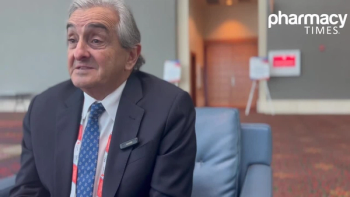
RT-PCR Testing May Improve Detection of C. Difficile in Hospital Settings
Molecular methods such as polymerase chain reaction show promise in monitoring the patient environment in hospitals and could help to provide reassurance prior to admission.
The use of reverse transcription polymerase chain reaction (RT-PCR) tests may improve the detection of
“There are currently no internationally agreed guidelines or consensus on sampling methodology. Culture-based tests are the most commonly used method in published studies,” the study authors wrote. “However, extended turnaround times (TATs) of >48 h limits clinical relevance. Molecular methods offering lower TATs are not yet optimized, and studies have used (PCR) to detect environmental C. difficile with varying success.”
The authors noted that environmental surveillance is not typically conducted routinely and is only done during outbreak investigations or for research.
“Environmental surveillance for Clostridioides difficile is challenging,” the investigators wrote. “There are no internationally agreed recommendations on which method should be used when environmental surveillance is undertaken.”
They added that unlike cultures for C. difficile, which take too long, molecular methods such as PCR show promise in monitoring the patient environment in hospitals and could help to provide reassurance to patients and hospitals prior to admission. The investigators evaluated the efficacy of RT-PCR in the detection of C difficile compared with culture-based strategies to analyze which is more sensitive and specific in a clinical environment.
The study analyzed 44 near patient areas of individuals testing positive for C difficile that were sampled using contact plates and moistened flocked swabs. The study authors collected environmental samples over a 6-month period in an adult, 820-bed tertiary referral hospital. Samples were gathered from the room floor, bed rail, tray table, call bell, mattress, toilet floor, toilet flush handle, and internal bathroom door handle.
Investigators collected 352 samples using flocked swabs, which resulted in 59 positive samples compared with 35 positive samples detected with alcohol treated and sub-cultured onto C difficile selective agar (P = 0.01).
Further, there were 23 positive samples detected using both culture methods, 36 positive samples found using the CHROMID agar only, and 12 positive samples detected using the alcohol treatment and culture method. A total of 71 samples culture-positive for C difficile were found with the flocked swab method vs 29 samples using the contact plates.
The study showed that 5.43% (n = 19) of samples were positive using both methods, 14.86% (n = 52) were positive only by the flocked swab and culture-method, and 2.86% (n = 10) were positive only by contact plates. Additionally, 15.14% (n = 53) of positive samples were found using both the tcdB RT-PCR assay and the culture-based method, whereas 4.86% (n = 17) of positive samples were found using the RT-PCR negative for tcdB and 7.43% (n = 26) were RT-PCR positive for tcdB but culture-negative.
“Despite the lower sensitivity and specificity, RT-PCR could potentially offer a more rapid and practical alternative,” the study authors wrote. “While culture picked up more positive samples for CD, PCR detected about three-quarters of the positive samples but the results from PCR were available within hours and not days.”
They suggested future research efforts to confirm the role of PCR in the prevention and control of C difficile in hospitals.
Reference
Grainger, R.J. et al. (2023) A comparison of culture methods and polymerase chain reaction in detecting clostridioides difficile from hospital surfaces, Journal of Medical Microbiology. Microbiology Society. Available at
Newsletter
Stay informed on drug updates, treatment guidelines, and pharmacy practice trends—subscribe to Pharmacy Times for weekly clinical insights.


















































































































































































































